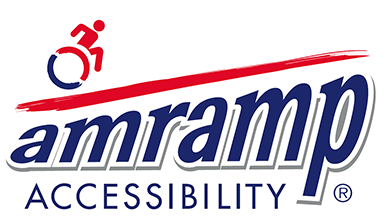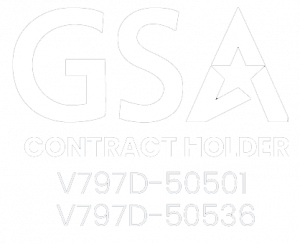Knowing Your Rights: How to tell and what to do when a business isn’t ADA compliant
Amramp is proud to be an ADA compliant manufacturer and count ourselves among the many groups working tirelessly to help people with mobile restrictions achieve equal opportunity, accessibility, and independence. Ideally, all companies would want to invest the time and money necessary to make their goods and services accessible to everybody, and Amramp’s expert installers all across the U.S. – and now in Canada – would like to help make it easy.
However, it pains us to see that there are some businesses who don’t feel that same sort of responsibility. So, the next best thing that we can do is help to educate our customers about their rights under the Americans With Disability Act (ADA). That is why we have put together this helpful guide explaining how to tell if a business is in compliance with ADA standards and what you can do about it if they’re not.
In essence, the ADA (specifically Title III) requires any public entity, for profit and non-profit alike, to remove all physical “barriers” that would inhibit a disabled patron from accessing their goods and services, and to modify any policies or procedures which are discriminatory against disabled people, and to provide aid and services to people who are sight, speech, or hearing impaired in the ways that are “readily achievable.”
The term “readily achievable” allows for variances in the size and resources of each business. For example, a large business with ample resources would be expected to do more to remove barriers than a small business with limited resources. It also allows for changing economic conditions where resources may become more limited. That does not, however, permanently excuse any business from eventually coming into compliance with ADA standards. As resources become available, all businesses are expected to make the necessary changes.
What are the ADA standards?
There are quite a few and there are different conditions for certain facilities, such as those built before 1993, when ADA first went into effect. For the purposes of this article, we’ll go over the most important standards. For more details, check out ADA Guide for Small Businesses and 2010 ADA Standards for Accessible Design.
- Accessible Parking – If public parking is provided for a place of business, accessible parking is also required, if readily achievable. Accessible parking is defined as a clearly marked spot (using the international sign of accessibility), that is at least 8-feet-wide and has a designated access aisle that is at least 5-feet-wide to either the right or left of the space. A van-accessible space requires an access aisle that is at least 8 ft. wide to allow for a person using a scooter or wheelchair to exit the vehicle using a side-mounted lift. One of eight of all accessible parking spaces must be van-accessible. These spaces should be located as close as possible to the accessible entrance and must have an accessible route connecting them that cannot comprise of any stairs or steep slopes.
- Accessible Entrance – All businesses are required to provide an accessible entrance, if readily achievable. This can be accomplished by either having:
- A sufficiently wide entrance (36-inches) on level ground
- Adding an ADA-compliant ramp, installing a lift – both of which Amramp specializes in installating
- Offering an alternate accessible entrance whose location is clearly indicated with a sign
It is also important that the door hardware is usable by people who might have difficulty grasping, such as a lever or loop-type handle. If it is not achievable to have an accessible entrance, the goods and services must be provided in some other way. This could be home delivery, take-out, curbside delivery, or some alternate service. .
- Maneuvering Space – When determining the space between shelves and displays, businesses should maintain a width of 36-inches, if readily achievable. Also, if there are steps within a facility that makes some parts of a business inaccessible, the business must make those goods available to everyone by
- Adding a ramp or lift
- Having staff to retrieve those items
Staff is also responsible for retrieving items that are out of reach of someone using a mobility device and providing information about a product or service to someone who is visually impaired.
- Accessible Counters and Seating – An accessible sales or service counter should be at least 36-inches-long and no more than 36-inches-tall, if readily achievable. A food service counter, on the other hand, should be at least 60-inches-long and no more than 34-inches-tall, if readily achievable. If tables are provided and some are fixed (attached to the wall or floor) at least 5% of the tables must be accessible to be compliant. This means a surface height somewhere between 28-and-34-inches-tall. A clear floor area of 30-inches-by-48 inches is also required and it must extend 19-inches under the table to provide leg and knee clearance. These specifications apply to both indoor and outdoor seating.
- Policies and Communication – ADA standards also require businesses to examine their policies and procedures and change any that could be discriminatory against those with disabilities. This is referring to things like allowing service animals in a store that would usually not allow any animals or keeping open checkout counters that can accommodate those using a mobility device. It also requires businesses to review communication between staff and disabled customers, such as writing notes for people with hearing or speech disabilities and making it easier for customers who use a telecommunications device for the deaf (TDD).
Should you find that any business is not in compliance with these standards, you can file a complaint of Title III violations with the United States Department of Justice (DOJ). If you have any questions about ADA you can also call the Department of Justice ADA Information Line, toll-free (1-800-514-0301 voice and 1-800-514-0383 TDD).
If you are a business owner needing assistance with ADA compliance, Amramp’s accessibility experts can help.
If you are a business who wants to be fully compliant with ADA standards
Call Amramp today to schedule a free on-site estimate
Please contact Amramp’s National Customer Service Center 888-715-7598




